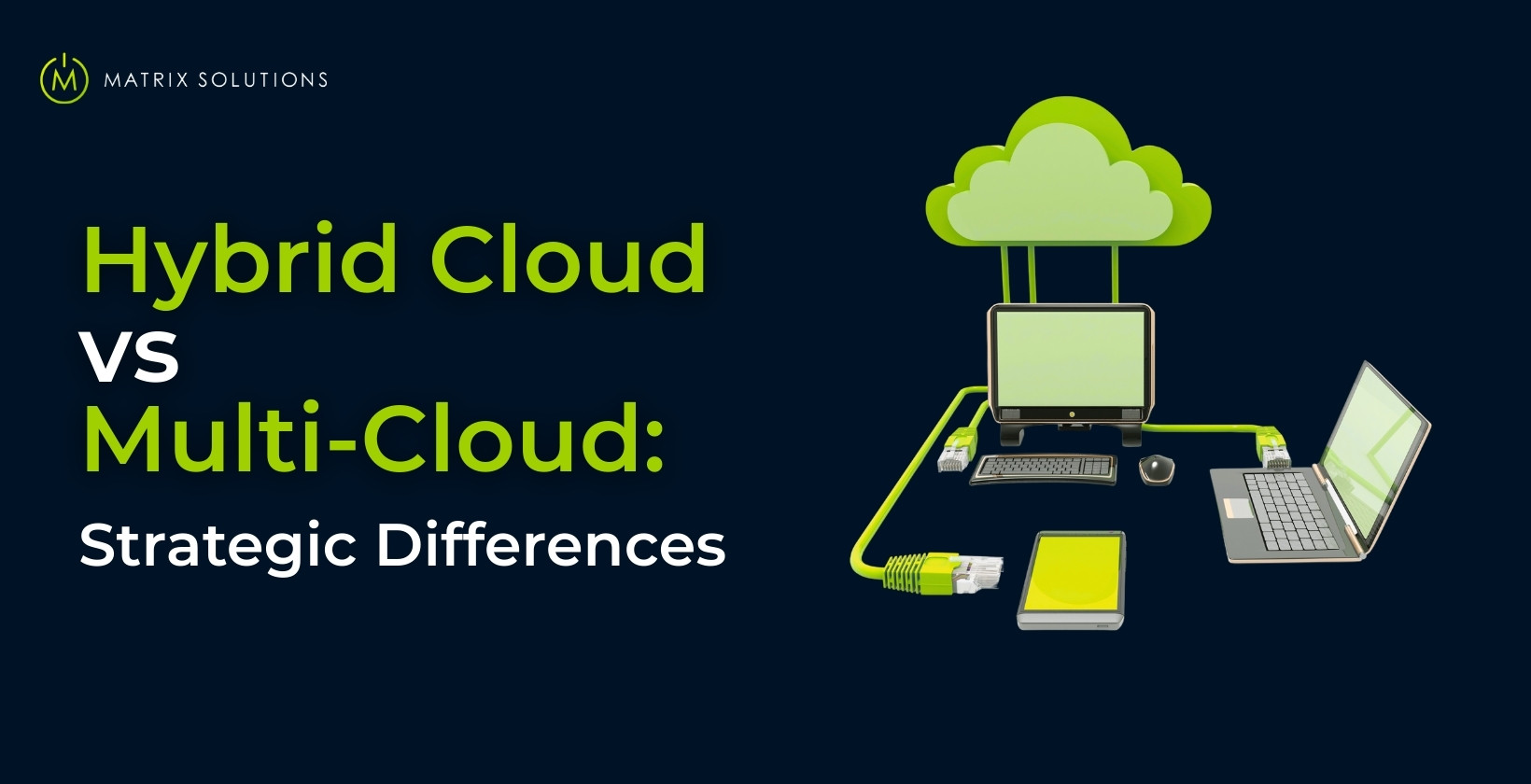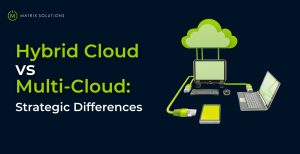As cloud technology matures, small to medium-sized enterprises (SMEs) and professional services, especially in law, finance, and insurance, face a critical choice: hybrid cloud vs multi-cloud. With digital operations expanding, cyber threats rising, and compliance requirements tightening, this is no longer just a technical decision; it’s a strategic one with long-term implications for performance, security, and growth.
Both architectures offer scalability, but they solve different problems. Are you aiming to improve data sovereignty? Reduce vendor lock-in? Enhance uptime? Or meet industry-specific compliance demands?
This guide explores the core differences between hybrid and multi-cloud models and helps you choose the right strategy for building a secure, resilient, and scalable infrastructure.
What Is Hybrid Cloud?
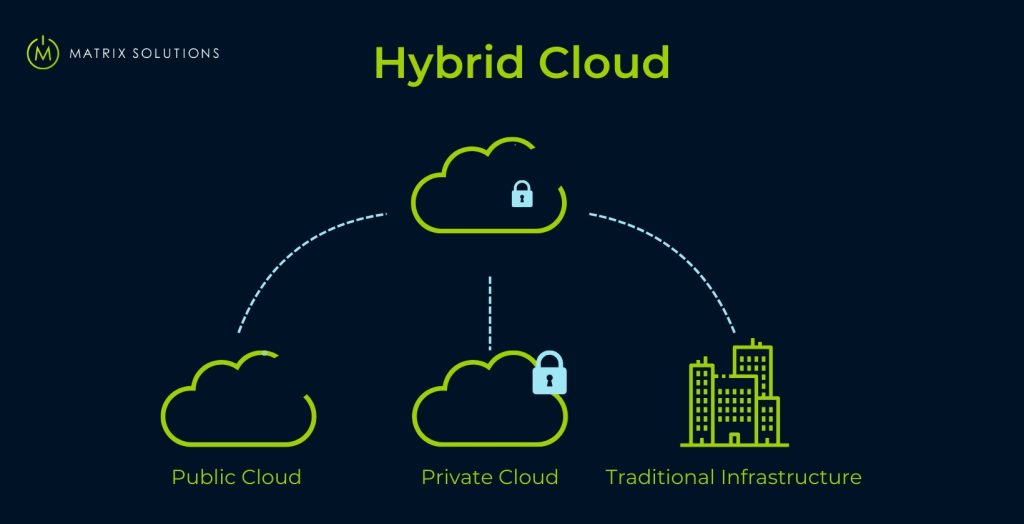
A hybrid cloud is a flexible IT infrastructure that blends on-premises systems with both private and public cloud services, enabling seamless data and application movement across environments.
For small and mid-sized enterprises (SMEs)—particularly in regulated sectors like law and finance—it offers the best of both worlds: the control, security, and compliance of private systems, combined with the scalability and cost-efficiency of public cloud platforms.
Advantages of Hybrid Cloud
Hybrid cloud offers four key advantages for SMEs: control, cost efficiency, scalability, and flexibility, by combining private infrastructure with public cloud resources.
- Cost Efficiency: Use public cloud capacity on demand while keeping critical systems in-house, reducing overall spend.
- Scalability on Demand: Easily handle spikes in demand by shifting workloads to the cloud, without straining internal systems or disrupting operations.
- Enhanced Security: Store sensitive data in a private cloud or on-premises while using public platforms for non-sensitive tasks.
- Operational Flexibility: Move workloads across environments based on cost, performance, or compliance, ideal for regulated sectors like law or finance.
Disadvantages of Hybrid Cloud
The hybrid cloud introduces three key disadvantages for SMEs. While it offers flexibility and control, these risks increase for businesses without in-house IT teams.
- Higher Complexity: Integrating on-premises, private, and public cloud systems requires careful planning and technical expertise.
- Management Overhead: Maintaining consistency across environments increases administrative demands, especially around updates, monitoring, and compliance.
- Latency Risks: Data transfer between environments leads to delays, particularly if networks or cloud services aren’t optimised for hybrid use.
When comparing hybrid cloud vs. multi-cloud, businesses must weigh these operational complexities against the model’s strategic benefits.
What Is Multi-Cloud?
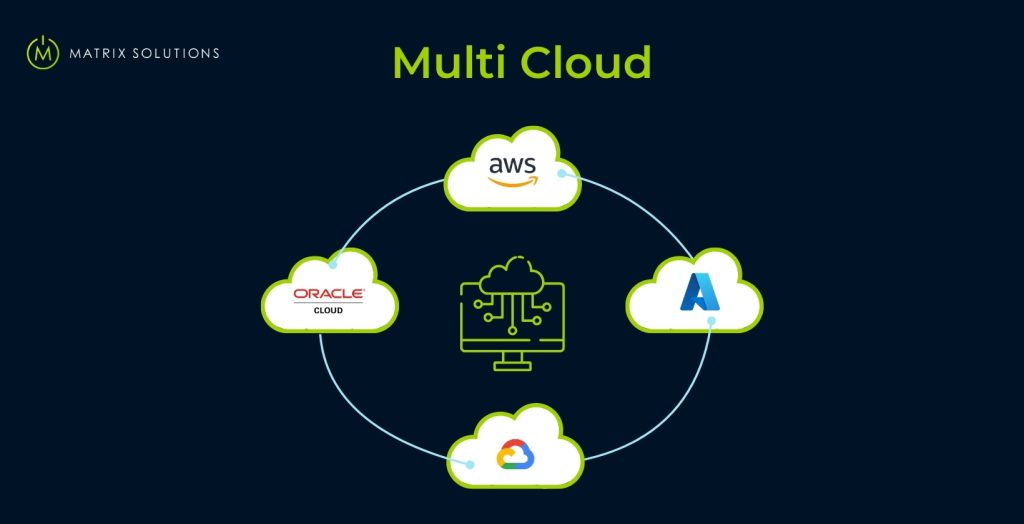
A multi-cloud strategy refers to using two or more public cloud providers, such as AWS, Microsoft Azure, or Google Cloud, to distribute workloads, services, and data across multiple platforms. Unlike a hybrid cloud, which blends private and public infrastructure, a multi-cloud approach focuses entirely on leveraging multiple vendors to reduce dependency, enhance flexibility, and optimise performance.
Advantages of Multi-Cloud
A multi-cloud strategy offers four key strategic benefits, which are outlined below. This setup helps businesses distribute workloads efficiently across providers.
- Avoiding Vendor Lock-In: Utilising multiple cloud providers reduces reliance on a single vendor, enhancing flexibility, pricing leverage, and service resilience.
- Redundancy for Uptime and Reliability: Built-in redundancy ensures workload shifts seamlessly if a provider fails, minimising downtime and client disruption.
- Optimised Workload Distribution: Assign workloads based on performance, cost, location, or compliance to maximise efficiency and ensure value for money across platforms.
- Enhanced Performance at Scale: Host services closer to end-users to lower latency and boost application responsiveness in different regions.
Disadvantages of Multi-Cloud
Multi-cloud introduces four operational risks, which are mentioned below. These risks are more pronounced for SMEs without strong IT governance.
- Increased Complexity: Coordinating multiple cloud platforms raises costs, complicates support, and increases management overhead.
- Data Integration Issues: Moving data across providers can cause latency, duplication, or format mismatches.
- Security Gaps: Inconsistent security models across clouds reduce visibility and increase breach risk.
- Compliance Challenges: Managing data sovereignty and regulations across regions is harder, especially for legal and financial firms.
Although these risks don’t outweigh the benefits for every business, they highlight why a well-planned strategy, and often a specialised IT partner like Matrix Solutions, is essential for those pursuing a hybrid and multi-cloud approach.
Key Differences Between Hybrid Cloud vs Multi Cloud
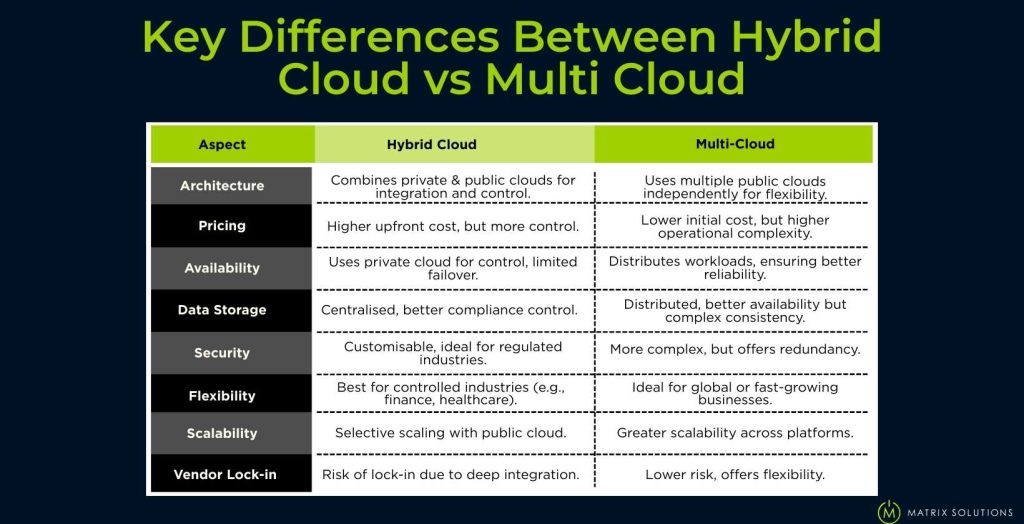
Choosing between hybrid cloud and multi-cloud comes down to how your organisation prioritises integration, control, performance, and compliance. While both models offer advanced cloud capabilities, they differ significantly in how they are architected, managed, and scaled.
Architecture: How resources are structured and integrated
The core architectural difference in the hybrid cloud vs multi-cloud comparison lies in how infrastructure is connected and managed. A hybrid cloud integrates on-premises, private, and public environments into a single, unified system, enabling seamless movement of data and applications between platforms. This setup suits businesses that need local control while scaling through the cloud.
In contrast, multi-cloud uses multiple public cloud providers without connecting them into a single architecture. Each operates independently, allowing workloads to be distributed based on performance, features, cost, or region. While hybrid cloud prioritises integration and control, multi-cloud focuses on distribution and flexibility, requiring more coordination but reducing dependency on any single provider.
Pricing: Cost considerations and operational expenses
Pricing models vary significantly depending on infrastructure setup and how services are managed. A hybrid cloud typically requires a higher upfront investment due to the need for on-premises systems and integration with cloud services. However, it allows cost control by keeping core workloads in-house and using public cloud resources selectively.
A multi-cloud approach shifts entirely to subscription-based services, which can lower capital costs but raise operational expenses. Managing multiple platforms leads to service overlap, complex licensing, and the need for specialised teams. Without centralised cost oversight, billing can become fragmented, especially as usage scales across providers.
Availability: Service reliability and uptime variations
Availability is a key consideration when comparing hybrid cloud vs multi-cloud. Hybrid setups often use on-premises or private cloud as the primary environment, with public cloud for backup or overflow. This offers control over failover and redundancy but usually lacks the built-in uptime guarantees of large cloud providers unless specifically designed for high availability.
Multi-cloud architectures enhance service reliability by distributing workloads across several public cloud providers. This enables cross-platform failover during outages and improves disaster recovery capabilities. However, to avoid delays or inconsistencies, these benefits depend on proper orchestration. Ultimately, hybrid offers control, while multi-cloud delivers resilience, making the uptime strategy a question of internal capability and business continuity needs.
Data Storage: Centralised vs. distributed data management
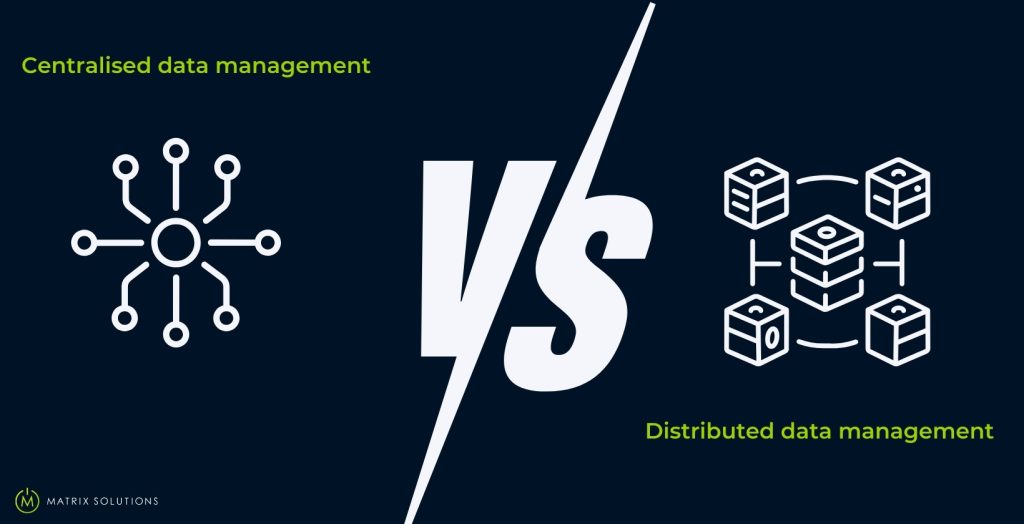
When comparing hybrid cloud vs. multi-cloud, the data storage strategy directly impacts compliance, performance, and control. In a hybrid cloud model, data is typically centralised within on-premises or private cloud systems, with public cloud used selectively. This setup provides greater control over data location and governance, which is especially important for sectors such as law and finance that require strict data sovereignty compliance.
A multi-cloud model distributes data across multiple public cloud providers, improving availability and geographic flexibility. This decentralised approach allows organisations to align storage with regional demand or provider capabilities. However, it can introduce challenges in maintaining data consistency and regulatory visibility across environments. The right approach depends on whether your business prioritises controlled governance or global distribution.
Security: Risk management and data protection strategies
Security is the main consideration when comparing the two clouds, especially for industries that manage regulated or sensitive data. In a hybrid model, security controls are easier to customise. Organisations can enforce strict access policies, encryption standards, and compliance safeguards across on-premises or private cloud infrastructure, offering stronger visibility and governance, particularly in sectors like law, insurance, and financial services.
A multi-cloud approach increases complexity, as each provider has its own security tools and policies. While this model offers built-in redundancy, it expands the attack surface and makes consistent access control and encryption enforcement more difficult. Maintaining protection across platforms requires advanced orchestration and unified policy management. Choosing between models depends on internal capabilities and whether centralised or decentralised security suits your operational structure.
Flexibility: Suitability for different workloads and industries
Flexibility in the hybrid cloud versus multi-cloud comparison depends on the types of workloads and the specific industry needs. Hybrid cloud suits organisations that are balancing legacy systems with cloud adoption, especially in the legal, finance, insurance, and healthcare sectors. These industries benefit from data control and compliance, making a hybrid ideal for workloads involving confidential data, internal operations, and document management requiring consistent governance and selective public cloud use.
Multi-cloud provides flexibility at scale. It supports businesses with global or diverse workloads. This model suits e-commerce, SaaS, and media sectors that require specialised providers for analytics, performance, or delivery. For SMEs aiming to avoid vendor lock-in and maximise agility, multi-cloud enables tailored workload placement, though hybrid remains the better fit when stability and regulatory compliance take priority.
Scalability: How each model supports business growth
Scalability depends on how each model supports growth while maintaining control. Hybrid cloud allows businesses to scale selectively by adding public cloud capacity. This approach makes the hybrid cloud suitable, where control over sensitive workloads is crucial.
Multi-cloud offers broader scalability by distributing workloads across multiple providers and regions. This enables businesses to optimise performance, access a variety of tools, and respond quickly to market shifts. It’s especially beneficial for high-growth companies managing global services or customer-facing applications. While hybrid cloud supports structured, compliance-focused scaling, multi-cloud excels in enabling rapid, flexible expansion across platforms.
Vendor Lock-in Risks: Challenges in migrating or switching providers
Vendor lock-in is a key concern when comparing hybrid cloud vs. multi-cloud, particularly for businesses seeking long-term flexibility. Hybrid models often involve deep integration with specific on-premises infrastructure and cloud providers, creating technical and contractual dependencies. Such dependencies can make platform changes costly or complex, especially when proprietary tools, regulatory policies, or custom configurations are involved.
A multi-cloud strategy reduces lock-in risk by spreading workloads across multiple providers. This allows businesses to retain bargaining power, respond to changing service conditions, and avoid reliance on a single vendor’s ecosystem. While managing multiple platforms adds complexity, the ability to adapt, migrate, or optimise based on need supports long-term agility and future-proofing, key advantages for scaling organisations.
Key Similarities Between Hybrid Cloud and Multi-Cloud
While hybrid cloud and multi-cloud strategies differ in structure, both share key similarities in terms of security, compliance, and operational complexity.
Security & Compliance Considerations
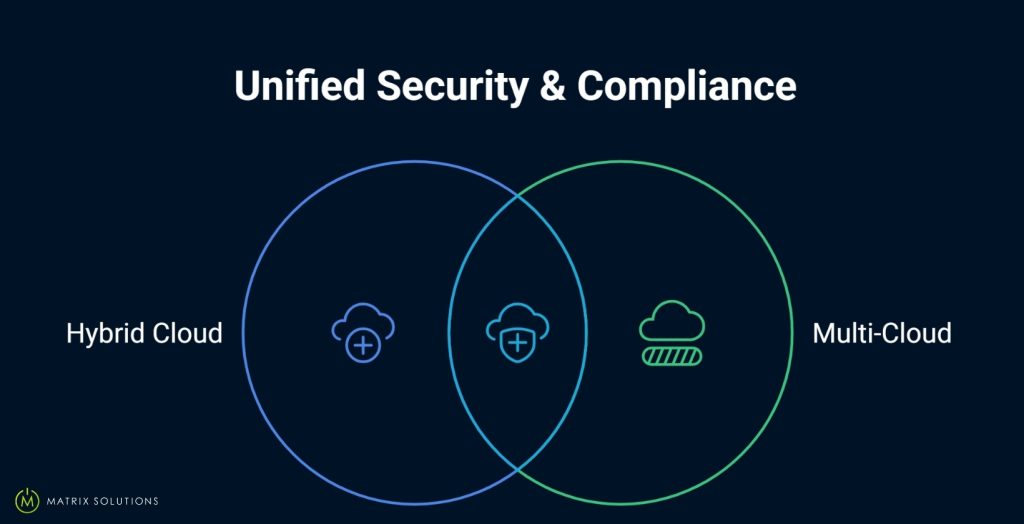
Both hybrid cloud and multi-cloud environments face similar security and compliance challenges. Regardless of architecture, organisations must comply with standards like GDPR, HIPAA, and ISO/IEC 27001. Securing data in transit and at rest requires robust encryption, strict access controls, and reliable audit trails to ensure data integrity and security. These measures are especially critical for legal, finance, and insurance sectors where data protection and regulatory oversight are non-negotiable.
Maintaining compliance across cloud models demands consistent policy enforcement, ongoing risk assessments, and clear documentation. With multiple platforms or vendors involved, complexity increases, but so does the need for unified governance. Whether operating in a centralised hybrid setup or a distributed multi-cloud strategy, businesses must adopt a security-first architecture to prevent breaches and meet evolving regulatory expectations.
Handling Sensitive Data Across Cloud Models
Managing sensitive data securely is a shared priority across both hybrid cloud and multi-cloud models. In either setup, best practices include encrypting data at rest and in transit, enforcing least-privilege access controls, and segmenting workloads based on sensitivity. These practices reduce exposure while ensuring compliance with data protection standards, including HIPAA, GDPR, and ISO 27001.
Hybrid cloud offers more direct control over sensitive data by allowing storage within on-premises or private cloud environments. Multi-cloud, while more distributed, can still protect sensitive data effectively with strong governance, centralised monitoring, and unified policy enforcement across providers. Regardless of the model, consistent classification, auditing, and backup protocols are essential to safeguarding critical information.
Managing Multi-Vendor & Regulatory Challenges
Both hybrid cloud and multi-cloud models present challenges in managing multiple vendors while adhering to regional and international regulations. With varying tools, service-level agreements (SLAs), and data handling policies, maintaining consistent governance across platforms becomes complex, especially under frameworks such as GDPR or data sovereignty laws.
To stay compliant, businesses must adopt unified policy frameworks, centralised monitoring, and orchestrated controls. Whether operating a hybrid setup or a multi-cloud architecture, visibility, risk audits, and cross-platform enforcement are crucial for regulatory alignment and secure operations.
How to Choose the Right Cloud Option for Your Business
Choosing between a hybrid cloud vs a multi-cloud approach depends on your business’s infrastructure, but Matrix Solutions helps you make the right call.
When to Choose a Hybrid Cloud Strategy
A hybrid cloud strategy suits businesses that require tight control over sensitive data while leveraging public cloud scalability. It’s ideal where compliance, security, and data sovereignty are critical. Organisations with on-premises infrastructure benefit from the ability to run core operations privately while offloading overflow or non-critical workloads to the cloud.
This approach is also effective for companies using legacy systems or managing workloads with varied sensitivity levels. Hybrid cloud enables gradual cloud adoption without disrupting existing environments. For SMEs that prioritise regulatory alignment, in-house integration, and consistent performance, a hybrid cloud provides a stable and scalable solution that balances modernisation with operational control.
When to Choose a Multi-Cloud Strategy
A multi-cloud strategy suits businesses operating across multiple regions that require vendor flexibility and value-for-money performance. It’s ideal for organisations with global footprints or diverse application needs, as it allows workload distribution across providers based on service strengths. This model reduces dependency on a single vendor and supports compliance with varying regional regulations.
By selecting different providers for tasks such as analytics, AI, or content delivery, businesses can improve availability, reduce costs, and mitigate downtime risks. In the hybrid cloud vs multi-cloud comparison, this model benefits firms seeking platform agility and long-term operational resilience across distributed environments.
Related Cloud Models Compared
Businesses comparing hybrid cloud vs. multi-cloud often encounter other cloud strategies worth considering, each with unique use cases and limitations.
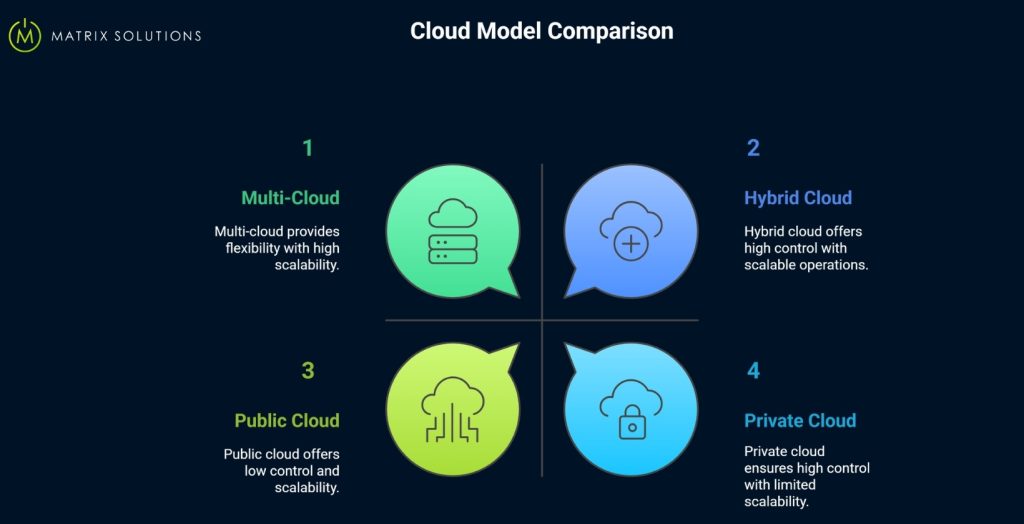
Cloud vs Hybrid Cloud: How They Compare
The key difference between cloud and hybrid cloud lies in deployment structure and data control. Traditional cloud computing utilises a single public cloud provider for hosting applications and storing data, making it ideal for startups or businesses with minimal compliance requirements due to its scalability and lower costs.
Hybrid cloud combines public and private infrastructure, allowing businesses to keep sensitive data in-house while using the public cloud for less critical workloads. This model is widely adopted where compliance and data sovereignty are essential alongside scalable operations.
Public Cloud vs Private Cloud: Core differences and use cases
When comparing public and private clouds, the main differences lie in cost, control, scalability, and customisation. Public cloud platforms like AWS and Azure offer low-cost, on-demand resources that are ideal for standardised workloads and rapid deployment. The trade-off is limited control over data governance and security settings due to shared infrastructure across multiple users.
Private cloud provides a dedicated environment, either on-premises or managed, offering greater control, security, and compliance support. It’s preferred in regulated industries, such as law or finance, where data sensitivity and system customisation are priorities. In the broader hybrid cloud vs multi-cloud discussion, understanding these foundational models helps businesses align cloud architecture with their performance, governance, and risk tolerance needs.
Multi-Cloud vs Community Cloud: How they compare to hybrid and multi-cloud
Multi-cloud and community cloud models cater to distinct needs in regulated sectors, including healthcare, finance, and government. Multi-cloud offers flexibility by distributing workloads across several public providers, helping organisations reduce vendor lock-in and meet compliance through region-specific deployments. Community cloud, by contrast, is a shared infrastructure tailored to a group of organisations with similar regulatory needs, supporting cost-effective, compliant collaboration.
In the wider context of hybrid cloud vs. multi-cloud, multi-cloud prioritises operational agility across providers, while community cloud focuses on shared governance within a secure, specialised ecosystem. Both serve niche use cases where data privacy, control, and adherence to sector-specific standards are critical. Choosing between them depends on whether broad scalability or regulatory alignment within a defined community is the greater priority.
FAQs
Can a business switch from hybrid cloud to multi-cloud later?
Yes, a business can switch from hybrid cloud to multi-cloud later. The transition requires re-architecting workloads, adjusting governance, and expanding vendor management.
What are the biggest challenges when managing a hybrid or multi-cloud environment?
The biggest challenges when managing hybrid or multi-cloud environments include governance, cost tracking, and interoperability. Businesses must align tools and policies across platforms. Hybrid cloud vs multi-cloud complexity increases with vendor count, security variation, and compliance needs.
Does hybrid cloud require a private cloud component?
Yes, hybrid cloud requires a private cloud component combined with public cloud services. This structure enables segmentation of workloads based on data sensitivity and regulatory requirements.
How do businesses ensure compliance in a multi-cloud strategy?
To ensure compliance, businesses implement unified policy frameworks, define data classification levels, and deploy workloads according to regional requirements. Audit logs, encryption standards, and centralised monitoring are essential for regulatory success.
What industries benefit the most from hybrid and multi-cloud solutions?
Industries like healthcare, finance, and legal benefit most from hybrid and multi-cloud solutions. Hybrid cloud vs multi-cloud relevance depends on control, compliance, and scalability needs. Regulated sectors prefer flexible, secure, and resilient cloud architectures.
Key Takeaways
A hybrid cloud integrates private infrastructure with a single public provider, while a multi-cloud approach uses multiple public providers.
Hybrid cloud provides greater control and supports legacy systems; multi-cloud offers flexibility and avoids vendor lock-in.
Both models demand strong governance, security, and compliance oversight.
Hybrid is ideal for businesses needing on-premises integration and regulatory compliance; multi-cloud fits globally distributed, performance-driven operations.
The right model depends on your infrastructure maturity, IT capabilities, compliance needs, and business growth goals. Matrix Solutions can guide your team every step of the way. So, get your free consultation today!


